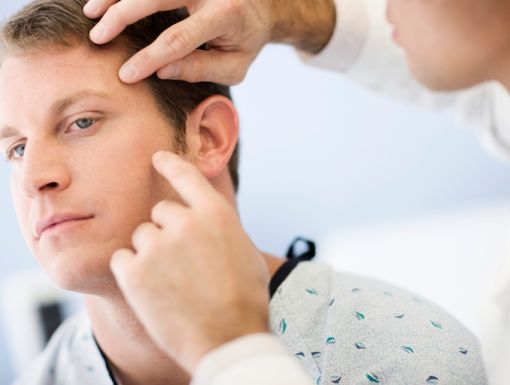
5 Ways To Identify Possible Skin Cancer At Home
We often forget that our skin, just like our liver and lungs, is an organ. In fact, it is our biggest organ and, like others, is susceptible to cancer. Skin cancer, the most common cancer in the United States, is preventable and easier to detect than other cancers because it can be seen on the skin and caught early with routine skin checks. While some people are more predisposed than others, people of all demographics and skin tone can get skin cancer.
Prevention is key. Limiting the amount of overexposure, to ultraviolet light, be it the sun or a tanning bed, is crucial. Avoiding tanning beds, applying a good, full-spectrum sunscreen (SPF 30 or higher) and wearing protective clothes, like a long-sleeved shirt and a wide brimmed hat, can help reduce sun exposure.
The two most common types of skin cancer are basal cell carcinomas and squamous cell carcinomas. They can usually be cured without risk to your overall health if treated promptly. The gold standard treatment for these common skin cancers, especially if they occur in areas of heavy sun exposure or cosmetically sensitive areas, is called Mohs micrographic surgery. Ask your dermatologist for details if you are diagnosed with one of these skin cancers.
The third most common type of skin cancer is melanoma and of the three, is the most serious. It causes the most deaths from skin cancer because it has the potential to spread to other parts of the body quickly.
Melanoma is made up of cells called melanocytes (the same cells that make-up benign moles). When these cells become abnormal and cancerous, they are referred to as melanoma.
Melanoma can develop on existing moles, but 70% to 80% occur on healthy looking, normal skin.
Remember your ABCs
According the American Skin Cancer Foundation, patients can spot check their own moles between routine skin checks by learning the “ABCs” of moles, especially ones that most likely to turn into melanoma, the most invasive and sometimes deadly form of skin cancer.
- A: asymmetrical. Look for an irregular shape or differences in the mole, such has having two parts that don’t look the same.
- B: border. Common moles typically have smoother, more even borders while melanoma can appear jagged.
- C: color. Benign moles are uniform in color (brown). Melanoma can vary in shades of brown. However, amelanotic melanomas don’t have melanin, the dark pigment that most moles have. Amelanotic melanomas can present as pink, red, or white, and some can even be colorless, which makes them even more difficult to recognize.
- D: diameter. How big is that mole? If your mole is the size of a pencil eraser, that could be cause for concern.
- E: evolving. Regular skin checks will help determine if a mole has evolved. Warning signs can include a change in diameter, color, or if the mole is crusting, itching or bleeding.
Other things to keep in mind
Acral lentiginous melanoma is the most common melanoma found in people with darker skin types. It can appear under the fingernails, toenails or on the palms of hands or the soles of the feet.
“Ugly ducklings” are moles that stand out from a grouping of other moles. For example, if you have a patch of moles on your arm, most normal moles will have a consistent appearance, An irregular mole, aka the “ugly duckling” will stand out from the rest in shape, size or color.
See your doctor if you notice any concerning changes in your skin.
Learn more about dermatology services at Ochsner.



